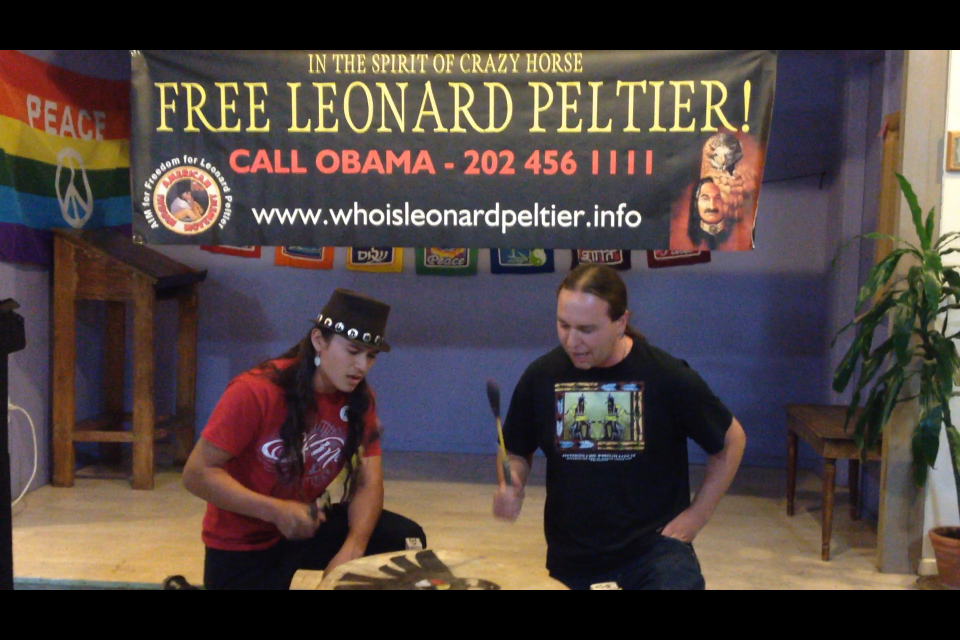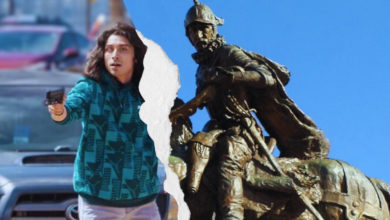 “We should also remind them, at every opportunity that we are part of the treaty they call the constitution and that we should be respected and given every equal right under that agreement. One thing in particular that the constitution says, is that you will receive a trial with a jury of your peers and yet every Indian that is arrested and tried in federal court is tried off the reservation, there is no jury of our peers,” said political prisoner Leonard Peltier June 27, who was an active member in the American Indian Movement at the time of his wrongful conviction.
“We should also remind them, at every opportunity that we are part of the treaty they call the constitution and that we should be respected and given every equal right under that agreement. One thing in particular that the constitution says, is that you will receive a trial with a jury of your peers and yet every Indian that is arrested and tried in federal court is tried off the reservation, there is no jury of our peers,” said political prisoner Leonard Peltier June 27, who was an active member in the American Indian Movement at the time of his wrongful conviction.
It is now 39 years since the Oglala shootout on the Pine Ridge Reservation in Wounded Knee, South Dakota. The two and a half month occupation of Wounded Knee resulted in the death of two A.I.M. members and two F.B.I. agents who were shot in crossfire. Despite no concrete evidence, it was Leonard Peltier who was charged with first degree murder and sentenced to two consecutive terms of life imprisonment.
Wounded Knee is a place that holds historical significance. It is the burial ground of a massive grave site comprised of 150-300 Native Americans who were massacred by U.S. 7th Cavalry in 1890.
Here in Albuquerque, New Mexico, Peltier remains a symbol of colonial resistance and we commemorate Leonard Peltier Day by further dialogue and education about the current circumstances surrounding local reservations.
Since the dawn of capitalist expansion, Native land has been a target for the natural resources and the Native people have been fighting uranium mining since it first appeared in the late 1930’s – early 1940’s. “Nuclear issues are related to colonization and the genocide of Indigenous peoples and that genocide continues today. Not on the plains like it was during the founding of the United States or even the A.I.M. days. Today, it’s a lot of stuff in the courtrooms battling it out on a totally different frontier where the companies are on one side and the grassroots native people are on the other side,” stated by Leona Morgan from the Dine nation, an activist with Dine-No Nukes.
There will be a vote on June 27, 2014 in the Navajo Nation Council Chambers on Legislation 373-13, which allows Uranium Resources Inc. to cross Navajo trust land. Despite Navajo Nation law banning uranium mining, this loophole protects the company while disregarding the human rights of the Native people who are vulnerable to life threatening health complications and environmental destruction due to radiation exposure.
July 16, 1979 was the date of the world’s largest radioactive liquid waste spill. It flowed from Church Rock, NM to approximately 100 miles west into Arizona where 1,000 tons of solid radioactive mill waste and 93 million gallons of acidic radioactive tailings leaked into the Rio Puerco, contaminating the water reservoir, livestock, local irrigation; it has yet to be cleaned up. This coincided with the Three Mile Island nuclear accident, but gained little publicity. Community members who live near the spill site encourage the public to get involved and spread awareness by annually marching every July 16th to the spill site.
Morgan continued, “This company might give a handful of jobs for a couple years, but our people don’t need dirty jobs. We need safe, long, sustainable careers. That’s what we want . . . We need to find other ways to create energy, create jobs, and it’s not by fueling this nuclear economy.”






